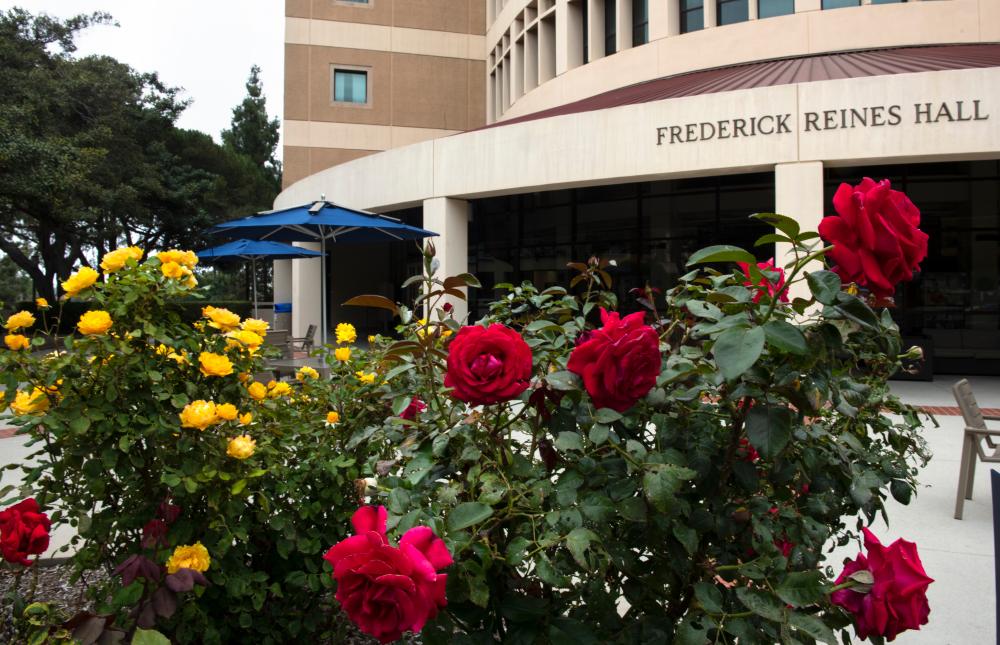
Professor Wendell Hill '74 Colloquium - Precision Measurement of the Quantum Vacuum with Petawatt Lasers
This is part of the “Celebrating Black in Physical Sciences Colloquium Series” organized by the UCI School of Physical Sciences Office of Access, Outreach and Inclusion where we invite prominent Black physical scientists and mathematicians to share their research with the community and also allows us the opportunity to celebrate their accomplishments. The colloquium series will feature speakers in each of the four department areas.
Precision measurement of the quantum vacuum with petawatt lasers
Wendell T. Hill, III
Joint Quantum Institute
Institute for Physical Science & Technology
Department of Physics
University of Maryland
Abstract:
Multi-petawatt laser pulses of short duration have placed us at the threshold of a new era where novel experimental investigations of nonlinear aspects of electrodynamics – quantum electrodynamics (QED) – will be possible. Never before feasible tests of QED from the photon side, and the intimate coupling between QED and the quantum vacuum are on the horizon. The very essence of the vacuum is entangled with a fundamental tenet of quantum physics – quantum fluctuation – virtual particles and antiparticles (e.g., electron-positron pairs) fluctuating into and out of existence. Quantitative measurements of virtual particles not only will challenge calculations from the 1930s, they will set strenuous limits for add-ons to the Standard Model.
Photons are unique probes in that they are uncharged and their Bosonic nature allows unlimited numbers of them to be co-located within an arbitrarily-small volume, at least classically. Experimentally, this is realized by raising the peak intensity of a focused laser pulse through a combination of increasing the pulse energy and decreasing its duration. Quantum mechanics makes a different prediction as the intensity increases. The linear response of light propagating even in a physical vacuum, as Maxwell equations demand, gives way to a nonlinear response. Post-Maxwellian theories, such as QED and Born-Infeld, allow virtual pairs to mediate an interaction between photons that can be viewed, to some extent, as light propagating through material. At high enough intensity the quantum vacuum will break down, inducing real pairs to emerge. The critical intensity (Icr) for breakdown, the so-called Schwinger limit, is ≃ 2×1029 W/cm2. Even though Icr is beyond current technology, there are fundamental features of the quantum vacuum that can be explored at substantially lower intensities. The intensity at which quantum nonlinear effects become unambiguously discernible in photon-only experiments is estimated to occur between 1023 and 1025 W/cm2, and perhaps below 1023 W/cm2. In this talk we will explore some of these ideas, focusing on the new physics that can be learned, and the tools and conditions required.
Wendell T. Hill, III holds the rank of Professor at the University of Maryland, College Park, (UMD) with appointments in the Institute for Physical Science and Technology and the Department of Physics, and is also a fellow of the Joint Quantum Institute (JQI). He is currently the director of the graduate Chemical Physics Program at UMD. He earned his BA from the University of California, Irvine, in 1974 and his PhD from Stanford University in 1980, both in physics. He was an NRC postdoc from 1980-1982 at National Institute for Standards & Technology (NIST, then the National Bureau of Standards) before joining the faculty of the University of Maryland. Hill’s honors include Presidential Young Investigator of the National Science Foundation (NSF), Fellows of The American Physical Society (APS), The National Society of Black Physicists and The African Scientific Institute, and has been profiled as a ScienceMaker for The HistoryMakers. His research interests are broad with publicationsranging from high-energy particle physics to ultracold atoms; he wrote the introductory chapter on electromagnetic radiation for the Encyclopedia of Applied Spectroscopy, published in 2009 by Wiley and is the co-author of the physics text “Light-Matter Interaction: Atoms and Molecules in External Fields and Nonlinear Optics,” published in 2007 by Wiley. His current research falls into three areas within atomic, molecular and optical (AMO) physics, with a focus on the quantum behavior of matter: (1) ultrafast dynamics using femtosecond and attosecond lasers to probe and control electrons in atoms as well as electrons and atoms in molecules; (2) ultra-intense dynamics using petawatt laser to investigate relativistic electron motion and the nature of the quantum vacuum; and (3) ultracold, degenerate gases, with a particular interest in using these unique phases of matter as quantum simulators to probe fundamental quantum processes. Dr. Hill served on the Scientific and Technical Advisory Committee of the Centro de Lasers Pulsados in Salamanca, Spain for eight years from its early days, through its commissioning to it being a full-fledged user facility. He recently completed six years as a member of the Board on Physics and Astronomy for National Academy of Sciences (NAS. He has held visiting positions at Lawrence Livermore National Labs, Instituto Venezalano de Investigaciones (Venezuela), the Université de Paris-Sud, (Orsay, France), NIST, and JILA at the University of Colorado. Hill has been a member of numerous program committees for national and international conferences, has served on a number of permanent and ad hoc committees for APS, the Department of Energy, the Optical Society of America (OSA), NAS, and NSF. He was the program officer for the Experimental AMO program at NSF (2010-2012 academic years). He was a founding member of the National Advisory Committee of the APS Bridge program and has been instrumental in the production of reports for the National Academy of Sciences, APS and NSF.
